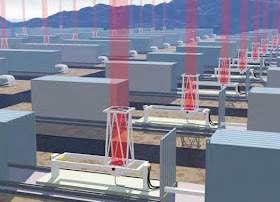Wireless charging by inductive coupling has been used in Oral-B toothbrushes since the early 1990s. But wireless charging was not common in consumer electronics such as mobile phones and laptop computers due to constraints in efficiency and rate of power transfer. However with new improved technologies and standards such as "Qi" and Qualcomms's WiPower, wireless charging has started to make its way into modern smartphones and tablets. Intel's upcoming ultrabooks will come with the ability to charge smartphones that are placed beside them.
 |
| source : qualcomm |
Wireless charging of consumer electronics is primarily classified into two categories.
1. Inductive Coupling.
2. Resonance Charging.
Inductive coupling uses the theory of electromagnetic induction to transfer power from one source to another without physical contact - like the power transfer from the primary winding to the secondary winding in a transformer. Because the strength of a magnetic field diminishes rapidly with distance, inductive coupling requires the charging source and the device to be very close or in contact with each other.
Resonance charging improves the above concept by using electromagnetic resonance. The coils are made to resonate at the same frequency and this enables power transmission through a greater distance. This means that the device only needs to be in the vicinity of the power source. This method has been found to be effective over distances of several feet.
 |
| source : intel |
So what will the future of Wireless charging look like? Current areas under research provide clues about it. Major computer manufactures are already in the process of introducing remotely powered phones, laptops and tablets. The idea would be eventually to make charging as simple connecting to a WiFi network. Wireless power transfer using Resonance Charging has already proved successful in charging several devices in a room simultaneously. In the future coffee shops and other public areas will be equipped with the facility of wireless charging and our smartphones and computers will power themselves automatically using these "charging hotspots".
Moving on to a larger scale in wireless power transfer, a prototype aircraft called SHARP which flies using energy transmitted from the ground has been developed. Laser propelled spacecraft is another field under research. The company Lightcraft Technologies aims at developing spacecraft which will be powered by laser beams directed from the earth. The idea is to use the laser beam to rapidly heat and expand air which in turn will propel the spacecraft. This eliminates the need to carry fuel, which is the heaviest component in a space craft.
 |
| source : popular science |
Using microwaves to beam power from solar power stations in space to the earth is another idea that is under consideration. Beaming power to earth from space has some environmental benefits but it poses a lot of challenges. Safety also would be a major concern in such an arrangement. Starting from handheld devices, wireless power transfer will one day be used in all our energy needs and will give rise to a truly wireless future.
